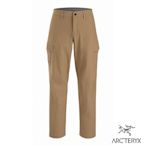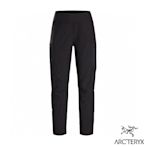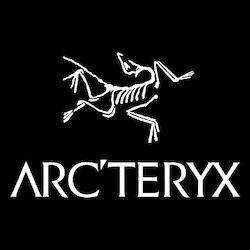搜尋結果
 $2580Arcteryx 始祖鳥 始祖鳥登山 始祖鳥戶外 始祖鳥排汗 Sinsola 登山戶外排汗 抗UV 遮陽帽 24K黑購物中心
$2580Arcteryx 始祖鳥 始祖鳥登山 始祖鳥戶外 始祖鳥排汗 Sinsola 登山戶外排汗 抗UV 遮陽帽 24K黑購物中心 $7980Arcteryx 始祖鳥 始祖鳥登山 始祖鳥戶外 始祖鳥排汗 男 Gamma 登山 戶外 排汗 軟殼長褲 寧靜綠購物中心折價券
$7980Arcteryx 始祖鳥 始祖鳥登山 始祖鳥戶外 始祖鳥排汗 男 Gamma 登山 戶外 排汗 軟殼長褲 寧靜綠購物中心折價券 $6480Arcteryx 始祖鳥 始祖鳥登山 始祖鳥戶外 始祖鳥排汗 男 Rampart 登山戶外排汗 軟殼長褲 帆布棕購物中心折價券
$6480Arcteryx 始祖鳥 始祖鳥登山 始祖鳥戶外 始祖鳥排汗 男 Rampart 登山戶外排汗 軟殼長褲 帆布棕購物中心折價券 $3780Arcteryx 始祖鳥 始祖鳥登山 始祖鳥戶外 始祖鳥排汗 女 Taema 登山戶外排汗 快乾長袖套頭衫 空氣雜灰購物中心
$3780Arcteryx 始祖鳥 始祖鳥登山 始祖鳥戶外 始祖鳥排汗 女 Taema 登山戶外排汗 快乾長袖套頭衫 空氣雜灰購物中心![Arcteryx 始祖鳥 始祖鳥登山 始祖鳥戶外 始祖鳥排汗 Sinsola 登山戶外排汗 抗UV 遮陽帽 幸福粉 Arcteryx 始祖鳥 始祖鳥登山 始祖鳥戶外 始祖鳥排汗 Sinsola 登山戶外排汗 抗UV 遮陽帽 幸福粉]() $2580Arcteryx 始祖鳥 始祖鳥登山 始祖鳥戶外 始祖鳥排汗 Sinsola 登山戶外排汗 抗UV 遮陽帽 幸福粉購物中心
$2580Arcteryx 始祖鳥 始祖鳥登山 始祖鳥戶外 始祖鳥排汗 Sinsola 登山戶外排汗 抗UV 遮陽帽 幸福粉購物中心![Arcteryx 始祖鳥 始祖鳥登山 始祖鳥戶外 始祖鳥排汗 Paltz 登山戶外排汗 棒球帽 沉靜灰 Arcteryx 始祖鳥 始祖鳥登山 始祖鳥戶外 始祖鳥排汗 Paltz 登山戶外排汗 棒球帽 沉靜灰]() $2780Arcteryx 始祖鳥 始祖鳥登山 始祖鳥戶外 始祖鳥排汗 Paltz 登山戶外排汗 棒球帽 沉靜灰購物中心
$2780Arcteryx 始祖鳥 始祖鳥登山 始祖鳥戶外 始祖鳥排汗 Paltz 登山戶外排汗 棒球帽 沉靜灰購物中心![Arcteryx 始祖鳥 始祖鳥登山 始祖鳥戶外 始祖鳥排汗 女 Taema Crop Logo 登山 戶外 排汗 快乾短袖圓領衫 音速綠 Arcteryx 始祖鳥 始祖鳥登山 始祖鳥戶外 始祖鳥排汗 女 Taema Crop Logo 登山 戶外 排汗 快乾短袖圓領衫 音速綠]() $2363Arcteryx 始祖鳥 始祖鳥登山 始祖鳥戶外 始祖鳥排汗 女 Taema Crop Logo 登山 戶外 排汗 快乾短袖圓領衫 音速綠購物中心
$2363Arcteryx 始祖鳥 始祖鳥登山 始祖鳥戶外 始祖鳥排汗 女 Taema Crop Logo 登山 戶外 排汗 快乾短袖圓領衫 音速綠購物中心![Arcteryx 始祖鳥 始祖鳥登山 始祖鳥戶外 始祖鳥排汗 男 Gamma 登山 戶外 排汗 軟殼長褲 帆布棕 Arcteryx 始祖鳥 始祖鳥登山 始祖鳥戶外 始祖鳥排汗 男 Gamma 登山 戶外 排汗 軟殼長褲 帆布棕]() $7980Arcteryx 始祖鳥 始祖鳥登山 始祖鳥戶外 始祖鳥排汗 男 Gamma 登山 戶外 排汗 軟殼長褲 帆布棕購物中心折價券
$7980Arcteryx 始祖鳥 始祖鳥登山 始祖鳥戶外 始祖鳥排汗 男 Gamma 登山 戶外 排汗 軟殼長褲 帆布棕購物中心折價券![Arcteryx始祖鳥 始祖鳥登山 始祖鳥戶外 始祖鳥排汗 Yetza 快乾長褲 女 黑 Arcteryx始祖鳥 始祖鳥登山 始祖鳥戶外 始祖鳥排汗 Yetza 快乾長褲 女 黑]() $4828Arcteryx始祖鳥 始祖鳥登山 始祖鳥戶外 始祖鳥排汗 Yetza 快乾長褲 女 黑購物中心
$4828Arcteryx始祖鳥 始祖鳥登山 始祖鳥戶外 始祖鳥排汗 Yetza 快乾長褲 女 黑購物中心![Arcteryx 始祖鳥 始祖鳥登山 始祖鳥戶外 始祖鳥排汗 女 LOGO 登山戶外排汗 短袖休閒Tee 白 Arcteryx 始祖鳥 始祖鳥登山 始祖鳥戶外 始祖鳥排汗 女 LOGO 登山戶外排汗 短袖休閒Tee 白]() $2580Arcteryx 始祖鳥 始祖鳥登山 始祖鳥戶外 始祖鳥排汗 女 LOGO 登山戶外排汗 短袖休閒Tee 白購物中心
$2580Arcteryx 始祖鳥 始祖鳥登山 始祖鳥戶外 始祖鳥排汗 女 LOGO 登山戶外排汗 短袖休閒Tee 白購物中心![Arcteryx 始祖鳥 始祖鳥登山 始祖鳥戶外 始祖鳥排汗 女 Yetza 登山 戶外 排汗 快乾長褲 黑寶石 Arcteryx 始祖鳥 始祖鳥登山 始祖鳥戶外 始祖鳥排汗 女 Yetza 登山 戶外 排汗 快乾長褲 黑寶石]() $5680Arcteryx 始祖鳥 始祖鳥登山 始祖鳥戶外 始祖鳥排汗 女 Yetza 登山 戶外 排汗 快乾長褲 黑寶石購物中心折價券
$5680Arcteryx 始祖鳥 始祖鳥登山 始祖鳥戶外 始祖鳥排汗 女 Yetza 登山 戶外 排汗 快乾長褲 黑寶石購物中心折價券![Arcteryx 始祖鳥 始祖鳥登山 始祖鳥戶外 始祖鳥排汗 Paltz 登山戶外排汗 棒球帽 黑 Arcteryx 始祖鳥 始祖鳥登山 始祖鳥戶外 始祖鳥排汗 Paltz 登山戶外排汗 棒球帽 黑]() $2780Arcteryx 始祖鳥 始祖鳥登山 始祖鳥戶外 始祖鳥排汗 Paltz 登山戶外排汗 棒球帽 黑購物中心
$2780Arcteryx 始祖鳥 始祖鳥登山 始祖鳥戶外 始祖鳥排汗 Paltz 登山戶外排汗 棒球帽 黑購物中心
Archaeopteryx ( / ˌɑːrkiːˈɒptərɪks /; lit. 'old-wing'), sometimes referred to by its German name, "Urvogel" ( lit. Primeval Bird) is a genus of bird -like dinosaurs. The name derives from the ancient Greek ἀρχαῖος ( archaīos ), meaning "ancient", and πτέρυξ ( ptéryx ), meaning "feather" or "wing".
Birds are a group of warm-blooded vertebrates constituting the class Aves (/ˈeɪviːz/), characterised by feathers, toothless beaked jaws, the laying of hard-shelled eggs, a high metabolic rate, a four-chambered heart, and a strong yet lightweight skeleton. Birds live worldwide and range in size from the 5.5 cm (2.2 in) bee hummingbird to the ...
- Career
- Opinions on Science and Skepticism
- Fellowships
- Honors
- Bibliography
- External Links
Zimmer received a B.A. in English from Yale University in 1987. In 1989, he started his career at Discover magazine, first as a copy editor and fact checker, eventually serving as a senior editor from 1994 to 1998. Zimmer left Discover after ten years to focus on books and other projects. In 2004, he started a blog called "The Loom", in which he wr...
Zimmer has publicly expressed his concerns about science denial, noting that attacks on science "are in a number of cases well-funded campaigns, and some politicians are backing some of them for their own political ends", where "climate change, evolution, and vaccines seem to top the list". He says that each case of science denial is concerning, an...
2002: John Simon Guggenheim Memorial FoundationFellowship.2005: Poynter Fellowship, Yale University. Invited speaker, Psychology.2006: Alfred P. Sloan FoundationGrant for Public Understanding of Science and Technology2010: Poynter Fellowship, Yale. Invited speaker, Molecular Biophysics and Biochemistry1994: Everett Clark/Seth Payne Award for Young Science Journalists, awarded "to encourage young science writers by recognizing outstanding reporting and writing in any field of science."1997: American Institute of Biological Sciences' Media Award that "recognizes outstanding reporting on biology to a general audience."1999: The Pan American Health Organization's Award for Excellence in International Health Reporting2004, 2009, 2012: American Association for the Advancement of Science's Science Journalism Award, awarded to honor "professional journalists for distinguished reporting on the sciences, engineering...Books
1. Zimmer, Carl (1998). At the water's edge : macroevolution and the transformation of life. New York: Free Press. 2. — (1999). At the water's edge : fish with fingers, whales with legs, and how life came ashore but then went back to sea(First Touchstone ed.). New York: Touchstone. 3. — (2000). Parasite rex : inside the bizarre world of nature's most dangerous creatures. New York: Free Press. 4. — (2001). Evolution : the triumph of an idea. 5. — (2004). Soul made flesh. Free Press. 6. — (2005...
Essays and chapters
1. Zimmer, Carl (July 1995). "Carriers of extinction". Discover. 16(7): 28, 30. 2. — (January 1996). "From fin to hand". Discover. 17(1): 50–51. 3. — (January 1996). "From teeth to beak". Discover. 17(1): 50. 4. — (January 1996). "Verdict (almost) in". Discover. 17(1): 78–79. 5. — (January 1996). "The State of the Earth : 1995". Discover. 17(1): 80–81. 6. — (February 1996). "Circus science". Discover. 17(2): 56–63. 7. — (April 1996). "Beetle of burden". Discover. 17(4): 27. 8. — (March 2010)....
Critical studies and reviews of Zimmer's work
She has her mother's laugh 1. Flannery, Tim (March 7–20, 2019). "Our twisted DNA". The New York Review of Books. 66(4): 38–39.
Phenomena: The Loom Archived 2018-06-30 at the Wayback Machine Zimmer's blog at National GeographicList of video conversations and debates with Zimmer and others on Bloggingheads.tvColor images of viruses from his book, A Planet of Viruses- 2
- Grace
- Popular science writer & blogger
The capybara[a] or greater capybara (Hydrochoerus hydrochaeris) is a giant cavy rodent native to South America. It is the largest living rodent[2] and a member of the genus Hydrochoerus. The only other extant member is the lesser capybara (Hydrochoerus isthmius). Its close relatives include guinea pigs and rock cavies, and it is more distantly ...
Zoroastrianism, also known as Mazdayasna and Behdin, is an Iranian religion.One of the world's oldest organized faiths, it is based on the teachings of the Avesta and the Iranian prophet Zoroaster.It has a dualistic cosmology of good and evil with the religion's eschatology predicting the ultimate triumph of good over evil. . Zoroastrians exalt an uncreated and benevolent deity of wisdom ...
Guallatiri is a stratovolcano in Chile that is 6,060–6,071 m (19,880–19,918 ft) high. It is located southwest of, or possibly within, the Nevados de Quimsachata volcanic group. The summit, surrounded by numerous fumaroles, may be a lava dome or volcanic plug, while the lower flanks of the volcano are covered by lava flows and lava domes.
The cat (Felis catus), commonly referred to as the domestic cat or house cat, is the only domesticated species in the family Felidae. Recent advances in archaeology and genetics have shown that the domestication of the cat occurred in the Near East around 7500 BC. It is commonly kept as a house pet and farm cat, but also ranges freely as a ...









